#Ferrari 375 America
Explore tagged Tumblr posts
Text

49 notes
·
View notes
Text



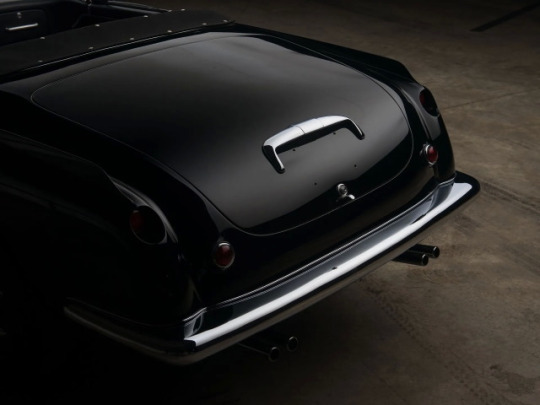
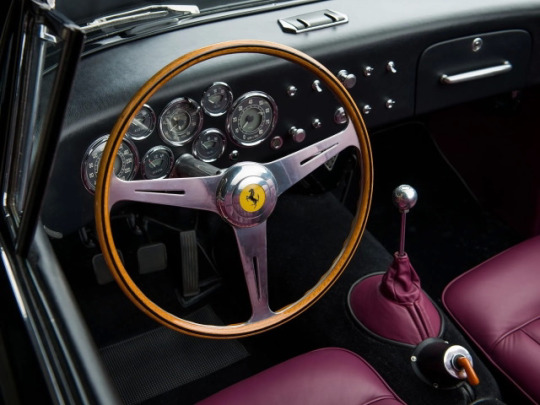
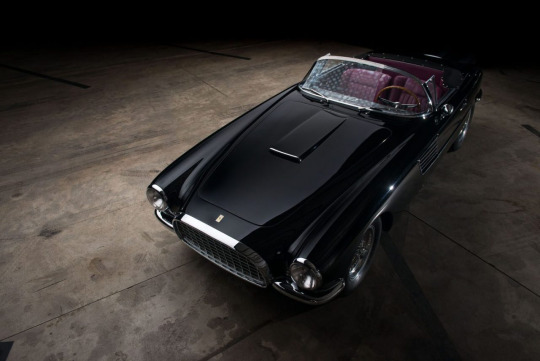
1954 Ferrari 375 America Vignale Cabriolet, one made….
23 notes
·
View notes
Text


1953 Ferrari 375 America Vignale
My tumblr-blogs: https://www.tumblr.com/blog/germancarssince1946 & https://www.tumblr.com/blog/frenchcarssince1946 & https://www.tumblr.com/blog/englishcarssince1946 & https://www.tumblr.com/blog/italiancarssince1946
15 notes
·
View notes
Text

1953 Ferrari 375 America Coupe
111 notes
·
View notes
Photo






1954 Ferrari 375 America Vignale Cabriolet, one made....
1K notes
·
View notes
Text

Ferrari 375 America Coupe 1955. - source Rustic Garage.
20 notes
·
View notes
Text

"The Miracle"
It’s the Untold story of how a Mexican mechanic saved Ferrari.
In 1950, the Pan American Race emerged. One of the most demanding endurance races in history that tested the best cars and the most experienced and daring drivers of the time.
Umberto Maglioli in his Ferrari 375 Plus was leading the fourth and final stage of the race. Shortly before finishing stage four, his car began to fail. His Ferrari 375 Plus had an oil leak through a hole in the carter.
In the middle of nowhere and without a spare part for this vital part of the car, hopes of finishing the race were practically nil.
On the fifth leg of the race and when the car was practically about to stop working, Umberto Maglioli made a stop in the middle of the road when he saw a small workshop called “El Milagro”.
Maglioli was received by Renato Martinez who was the owner and sole mechanic of the workshop in the middle of nowhere. Renato Martinez confirmed to Maglioli that it was in fact an oil leak in the crankcase and that he had a "creative" solution to repair it in moments. At least to be able to finish their journey.
Renato Martinez caught a bucket and a big bar of soap. He also took three small bottles of Coca-Cola and gave them to Maglioli saying, "While you drink this Coke I will repair your car."
An Unbeliever Maglioli could only sit, drink the coke and wait for a miracle. Meanwhile, Renato Martinez dismantled the Ferrari and using the bar of soap began to gradually rub the carter with it. By friction the soap melted and created a paste that sealed the leak hole. Soap "cuts" the oil and adheres to the metal in the crankcase and when solidified it became hard as a rock.
Amazed, Maglioli thanked Renato and pulled out of Ferrari a small Roliflex camera which he used to capture that miraculous moment. Workshop "El Milagro" and Renato next to the Ferrari 375 Plus under repair were immortalized.
Umberto Maglioli in his Ferrari 375 Plus, finished the fifth stage of the race in first place and changed Ferrari history forever.
While Ferrari was a well-known car in Europe, it wasn’t in America and the brand was far from being an economically viable business. Ferrari desperately needed to prove to America that their cars were superior, fast and reliable. Winning the race would bring them recognition and with its sales in the United States, which would help them save the brand from bankruptcy.
Some time later, Renato Martinez received by mail the printed photograph Maglioli had taken of that moment. The photograph was signed:
"To my friend Renato M. From Umberto Maglioli. "
The photograph came along with a letter thanking Renato and said: "Renato, The Mexican Miracle that helped Ferrari."
That letter was signed by a man named Enzo Ferrari.
#ferrari#Ferrari 375#racecar#supercar#hypercar#sportscar#muscle car#muscle cars#musclecar#musclecars#classic#aesthetic#aesthetics#classic car#vintage#vintage car#car#cars#luxury car#aes#exotic car#dream car
269 notes
·
View notes
Text
1953 Ferrari 375 America Coupe Pinin Farina - "Boy On A Dolphin" (1957)
13 notes
·
View notes
Video
youtube
1957 (All Original) Chrysler 300C Convertible
The Chrysler 300 "letter series" are high-performance personal luxury cars that were built by Chrysler in the U.S. from 1955 to 1965 and were a sub-model from the Chrysler New Yorker. At its introduction, it was advertised as "America's Most Powerful Car".
The 1957 model year 300C was corporately shared with an all new appearance for Chrysler products called the "Forward Look" and featuring a "yawning" wide trapezoid-shaped front grille which was unique to the 300C, "Vista-Dome" windshield, dual headlights, and gradually rising tailfins starting from the doors similar to Chrysler-branded products. The wheel diameter changed from 15 in (381 mm) to 14 in (356 mm) while continuing to use drum brakes for all wheels, and to keep the front brakes cool a cooling duct was installed with the air intake located just below the headlights that fed air directly to the front brakes. The exterior color list was expanded to offer Jet Black, Parade Green metallic, Copper Brown metallic, Gauguin Red and Cloud White while the interior was tan leather standard and optional interior choices were available from the New Yorker list of which the 300 was based.
The Hemi engine was upgraded to 392 cu in (6.4 L) with 375 hp (280 kW), or as a limited edition 390 hp (290 kW) version (18 built). The 392 CID engine was exclusive to the 300, New Yorker and Imperials, while the dual four barrel carburetors was standard on the 300C and continued with an improved air induction system that gave each carburetor its own air cleaner to improve efficiency. A convertible model was available for the first time and was listed at US$5,359 ($51,704 in 2021 dollars) while the two-door hardtop was listed at US$4,929 ($47,556 in 2021 dollars). In comparison, a 1957 Imperial Crown Convertible was listed at US$5,598 ($51,276 in 2021 dollars). GM's Pontiac Division introduced the Pontiac Bonneville as a convertible only, offering fuel injection and a similar price tag but offered lower luxury content and a reduced price for 1958, and Mercury offered the Mercury Turnpike Cruiser for 1957 with the optional 430 cu in (7.0 L) Super Marauder V8.
The car introduced red, white, and blue '300C' circular medallions on the sides, hood, trunk, and interior and was the first model to use the color scheme. A total of 1,918 coupes and 484 convertibles were built.
#twoguysandaride #carsoftheday #CarReview #CarReviews #ClassicCar #ClassicCars #ClassicBoat #HowTo #TechHowTo #CarTech #Racing #PontoonBoat #Ford #Chevy #Honda #Toyota #Porsche #Honda #Toyota #Chevrolet #Buick #KIA #Hyundai #GMC #Volvo #Mercedes #Polestar #Ferrari #CarReview #CarReviewChannel #NewCars #Pontoon #FishingBoat #4Wheeler #OffRoad #Dirt #Snow #Sand #Water #Technology #Tech #Bentley #Jaguar #LandRover #Audi #BMW
2 notes
·
View notes
Text
Ferrari 410 SuperAmerica Scaglietti Boano 1957 - Elle a succédé à la 375 America

La seule Ferrari 410 Superamerica à l'origine carrossée par Scaglietti
Le moteur de la Ferrari 410 SuperAmerica - présenté sur le châssis de la 375 America au Salon de l’automobile de Paris en octobre 1955. Quant à la voiture, elle n’a été dévoilée au public que lors du Salon de l’automobile de Bruxelles de 1956. Sa carrosserie élégante aux dimensions impressionnantes était l’oeuvre de Pinin Farina. Étonnamment, ce modèle était_destiné à une production en série. Il a également_été décliné en diverses versions de compétition. Signant ainsi le retour d’une ancienne pratique de Ferrari.

Ferrari 410 Scaglietti Boano SuperAmerica 1957 La Ferrari 410 SuperAmerica, a succédé à la 375 America. Présentée au public sous la forme d’un châssis nu au Salon de l’automobile de Paris en 1955! puis sous sa forme complète au Salon de Bruxelles début 1956. Trois séries très limitées ont_été produites entre 1956 et 1959. Visuellement, le véhicule présenté à Bruxelles en 1956 était très similaire au nouveau design de la 250 GT coupé de Pinin Farina! qui a ensuite donné naissance à la 250 GT Boano et Ellena. La plupart des exemplaires des séries I et II ont repris ce style de carrosserie! mais quelques-uns arboraient une carrosserie unique radicalement différente. Puisque la 410 Superamerica était un modèle extrêmement coûteux réservé à une clientèle fortunée! même les coupés « standard » présentaient tous des caractéristiques différentes pour satisfaire des exigences spécifiques des clients. Carrosserie de la Ferrari 410 SuperAmerica Les carrosseries uniques conçues pour les véhicules des séries I et II figuraient parmi les plus surprenantes jamais aperçues sur un châssis Ferrari. Pinin Farina a produit deux prototypes de Superfast radicalement différents. Le premier a été_présenté au Salon de l’automobile de Paris en 1956 sur un châssis n° 0483SA. Avec un toit en porte-à-faux sans montants de pare-brise avant (ajoutés plus tard, avant la commercialisation). Mais aussi des ailettes dynamiques intégrant de feux triangulaires sur les arêtes arrière du capot.

Ferrari 410 Scaglietti Boano SuperAmerica 1957 Il adoptait une finition blanche et bleu métallique pâle, les deux couleurs étant séparées par une bande chromée faisant le tour de la voiture à partir de chaque côté de la grande grille de calandre ovale. La deuxième Superfast, construite sur un châssis n° 0719SA, a été présentée au Salon de l’automobile de Turin en 1957. La partie avant et l’habitacle étaient similaires, mais l’arrière affichait une ligne assagie et plus élégante. Ce qui s’accordait mieux avec l’avant du véhicule. Le principal fabricant des carrosseries de compétition Ferrari de l’époque, Scaglietti, a également habillé un exemplaire doté d’un châssis 0671SA. Celui-ci présentait également des ailettes. (adaptées au goût américain, puisque l’essentiel de ces véhicules était_destiné à ce marché). Mais aussi des panneaux de toit, de seuil et d’ailette en acier brut. Ceux-ci contrastaient avec le rouge foncé de la carrosserie. Carrozzeria Boano Le Carrozzeria Boano a livré son interprétation des ailettes. Un coupé monté sur un châssis 0477SA présentant une lunette arrière en deux parties. Mais aussi un cabriolet doté de la même carrosserie sur un châssis 0485SA! ces deux modèles présentant des ailettes incurvées. C’est cependant Ghia qui a proposé les ailettes les plus imposantes et les plus longues! avec son interprétation sur châssis 0473SA, inspirée des voitures de rêve « Gilda » et « Dart » qu’il avait conçues pour Chrysler.
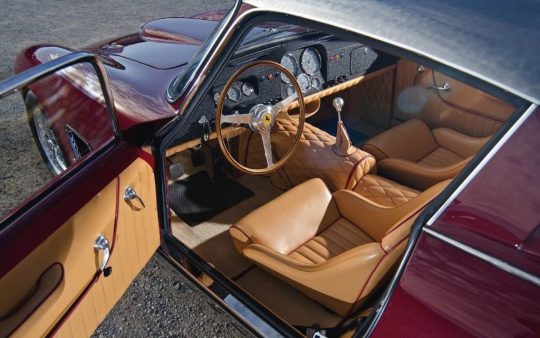
Ferrari 410 Scaglietti Boano SuperAmerica 1957 Châssis et moteur La série I présentait généralement un châssis d’un empattement de 2 800 mm! bien qu’il y ait eu des exceptions, et la série II! produite en 1956 et 1957, un châssis d’un empattement de 2 600 mm. Quant à la série III! elle_fut présentée fin 1958 au Salon de l’automobile de Paris - sur un châssis d’un empattement de 2 600 mm! avec une nouvelle version de la carrosserie signée Pinin Farina. Les châssis des véhicules de la série III (référence 514/A), présentant un empattement de 2 600 mm! suivaient également la séquence de numérotation impaire des routières avec le suffixe SA! et leurs composants mécaniques étaient identiques à ceux des séries précédentes. Le style de carrosserie conçu par Pinin Farina était commun à tous les véhicules de la série! excepté le prototype présenté au salon, qui comptait cinq fenêtres (tous les exemplaires suivants en comptaient trois). Il existe toutefois encore des distinctions, la principale concernant les phares! qui sont non carénés sur certains véhicules et encastrés dans les ailes avant sous des caches en Perspex sur d’autres.
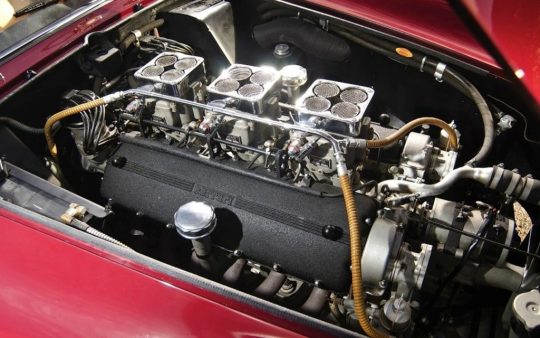
Ferrari 410 Scaglietti Boano SuperAmerica 1957 Motorisation Le moteur de la série III - doté de nouvelles culasses avec les bougies à l’extérieur du V. Alors que jusqu’à présent les bougies_étaient placées à l’intérieur du V sur tous les V12 Ferrari. Cette caractéristique a ensuite été_reprise sur le moteur 3 litres de la 250 GT. Il s’agissait de la dernière version du « long block » de Lampredi avec des chemises vissées dans la culasse. Par la suite, des chemises coulissantes plus classiques avec joint de culasse fut_utilisées sur les moteurs de toutes les cylindrées. Fait inhabituel, ce moteur utilisait des bielles usinées à partir d’une billette d’acier massif ! ce qui était_normalement réservé à certains moteurs de compétition Ferrari, plutôt que des bielles en acier forgé. Découvrez tous les autres modèles Ferrari Équipe de trois carburateurs double corps Weber 46 DCF3 et d’un distributeur à deux bobines pour développer 360 bhp. Par ailleurs couplé à une boîte de vitesses 4 rapports à dispositif de synchronisation! avec une disposition des vitesses différente de celle des modèles Superamerica précédents. La disposition de la transmission et les rapports de pont en option - identiques à ceux des modèles précédents de la série. Site officiel Ferrari
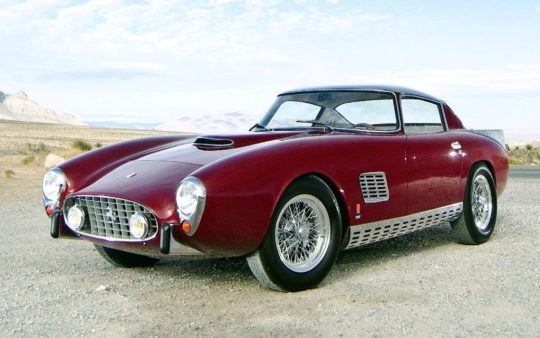
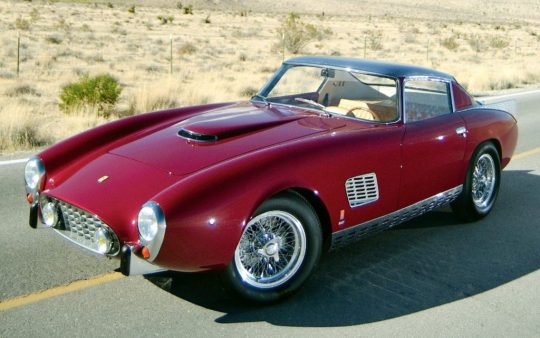


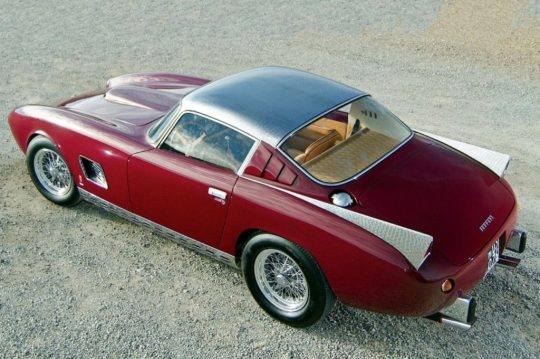
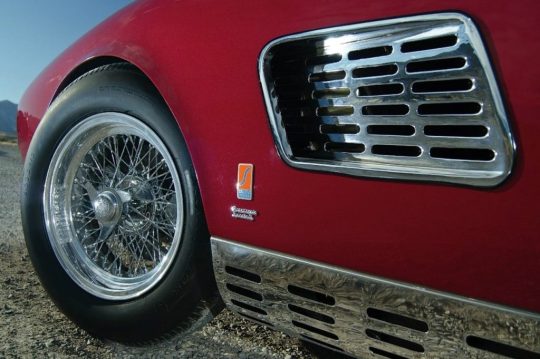

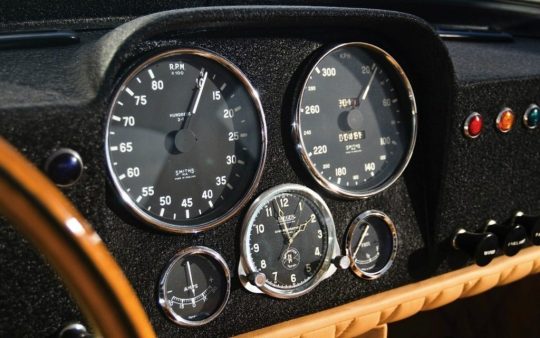

Read the full article
1 note
·
View note
Photo

1953 Ferrari 375 MM - Enzo Ferrari Museum in Modena, Italy Ferrari 375 Mille Miglia carried on the Ferrari tradition of naming sports models after the famous Italian road race and was a spin-off of the F1 single-seater, just like its sister car, the 375 America, which was the GT equivalent. The engine was based on its F1 counterpart, albeit with a new crankshaft giving a shorter, 68 mm stroke but with a bigger bore for a larger, 4.5-litre displacement. The engine debuted in a 340 Berlinetta at Le Mans where it was driven by Ascari and Villoresi. Subsequently Pininfarina built a series of around 10 spiders and a few berlinettas which were mainly fielded by privateers. A total of 26 examples were built including four converted examples of the 340 MM. 375 MM raced in the Carrera Panamericana, though with limited success. A fourth place in 1953 and a second place in 1954. Of course, there were victories such as in the 24 Hours of Spa and the 12 Hours of Casablanca. The 1000km race at the Nürburgring with Giuseppe Farina as pilot also skewed the 375 MM’s record. King of the Ferrari Driving Playboys and a well-known diplomat in the jet set, Porfirio Rubirosa, also owned 375 MM and his girlfriend of the time, Zsa Zsa Gabor, the Hungarian actress (also known for having had nine husbands), never missed an opportunity to enthusiastically pose in the cockpit of the 375 MM. Engine: front, longitudinal 60° V12 Total displacement: 4522.68cc Power: 250 kW (340 hp) at 7000 rpm Top Speed: 289km/h #ferrari #ferrari375mm #luxury #modena #scuderiaferrari #ferrarimuseum #ferrariclassic #museocasaenzoferrari #enzoferrari #classiccar #carmuseums #zsazsagabor #ferrariheritage #italia #supercars #oldtimers #porfiriorubirosa #cars #racing #classiccars #traveling #forzaferrari #ferrarilife #luxurycars #cavallinorampante #travel #ferrariworld #prancinghorse #carsofinstagram #motorsport (at Museo Enzo Ferrari - Modena) https://www.instagram.com/p/CpzPtT9I6-K/?igshid=NGJjMDIxMWI=
#ferrari#ferrari375mm#luxury#modena#scuderiaferrari#ferrarimuseum#ferrariclassic#museocasaenzoferrari#enzoferrari#classiccar#carmuseums#zsazsagabor#ferrariheritage#italia#supercars#oldtimers#porfiriorubirosa#cars#racing#classiccars#traveling#forzaferrari#ferrarilife#luxurycars#cavallinorampante#travel#ferrariworld#prancinghorse#carsofinstagram#motorsport
0 notes
Text

Ferrari 375 MM Chassis Number 0378AM
One of the first cars to reach collector status were these classic Ferraris. Over the years, car enthusiasts had uncovered many forgotten yet valuable cars that were lost. Even today, there are numerous tales about finding rare Ferraris all over the world. But even the truest Ferrari aficionados have no information about the famous 375 MM with chassis number 0378AM. The 375 MM was Ferrari’s top racing car with a potent V12 engine and 340 HP, ludicrous power for the day.

Emerging in early 1953, the 375 MM was highly successful in Europe as well as in America. Ferrari managed to make and sell 26 of them. Since it was an important, successful car, most owners took good care of their cars. Today, 25 of those 26 are alive and well. Ferrari sold the missing one, the chassis number 0378AM to Dr. Enrico Wax, an Italian businessman. Dr. Wax was a supercar collector who didn’t race his 375 MM, keeping it in his garage in Genoa. However, the Ferrari community never heard about the car again so no information is available on the 0378AM after 1953. If the car exists today, it should be one of the most original, well-preserved Ferraris ever built.
28 notes
·
View notes
Text



1953 Ferrari 375 America Pininfarina
My tumblr-blogs: https://www.tumblr.com/blog/germancarssince1946 & https://www.tumblr.com/blog/frenchcarssince1946 & https://www.tumblr.com/blog/englishcarssince1946 & https://www.tumblr.com/blog/italiancarssince1946
0 notes
Text









1955 Ferrari 375 America Coupe Speciale (Pininfarina)
14 notes
·
View notes
Photo
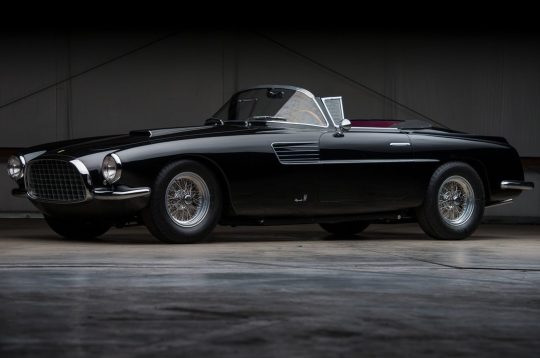


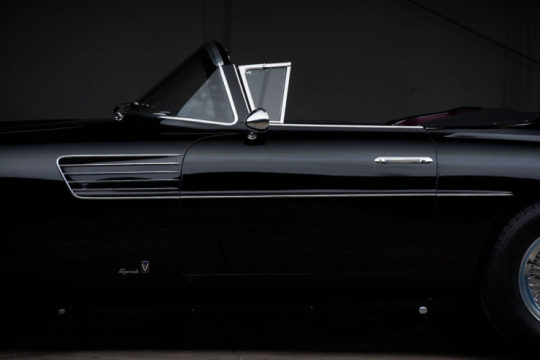

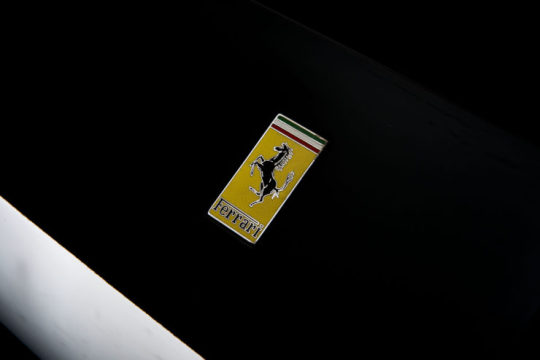




Ferrari 375 America Vignale Cabriolet
As the name suggests, the Ferrari America series of high-end grand tourers was developed by the still-young Italian automaker to appeal to the American market. In the 1950s Americans tended to prefer large vehicles with prodigious engines and jet age styling – so that’s what Enzo gave them.
Each Ferrari America 375 was powered by a road-going version of the Lampredi designed “long block” V12 with a displacement of 4522cc. This engine was fitted with a bank of Weber carburetors, a twin coil and distributor ignition, and power was sent to the live axle rear end through an all-synchromesh manual transmission.
Upon ordering their car people could choose from a variety of final drive ratios depending on whether they wanted searing acceleration or more relaxed highway cruising at lower RPMs. As was common with Ferrari naming conventions the 375 was named for the displacement of a single cylinder – though in this case it was rounded down slightly from 376.8cc to 375.
The Ferrari America series would begin with the 340 America released in 1950 and sold until 1952 in very limited numbers. This would be followed by the 342 America in 1952, which was then succeeded by the America 375 in 1953.
The America 375 was one of the high points of the series, along with its successor the 410 Superamerica, which was followed by the 400 Superamerica, the 500 Superfast, and finally, the 365 California.
Lampredi V12s were used in all the cars up until the 400 Superamerica in 1959 at which point the lower displacement Colombo V12 was used. This would be the V12 that would power many of Ferrari’s most important cars through the 1960s and beyond, but there’s no denying the Lampredi engine was the king of the 1950s. The car you see here is the Ferrari 375 America Vignale cabriolet from 1954 and as mentioned further up, it’s both the only 375 cabriolet that was ever made and one of just three big-block cabriolets with 4.5 liter or larger engines built by Ferrari in the 1950s.
Enzo Ferrari sold this car to its first owner, Mrs Bianca Colizzi, the daughter of famous Italian film director Giuseppe Colizzi. For reasons lost to history it was parked up in storage a year later where it was seen by Luigi Musso, the future Scuderia Ferrari factory driver.
Musso mentioned the existence of the car to an American acquaintance named Harry Chambers, a TWA executive who had been sent to Italy to open the airline’s Milan division. Chambers was able to track down the Ferrari and buy it, he enjoyed driving it in Italy for two years, even visiting the Monza circuit on at least one occasion.
#Ferrari 375 America#cabriolet#Enzo Ferrari#Lampredi#410 Superamerica#400 Superamerica#500 Superfast#365 California#Colombo V12#giuseppe colizzi#Luigi Musso
43 notes
·
View notes
